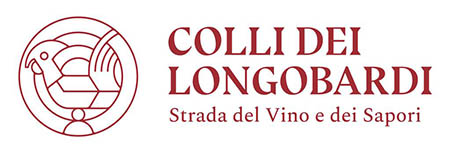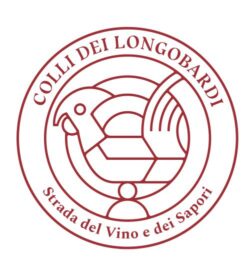The communes of our territory
The Strada del Vino “Colli dei Longobardi“ starts from Brescia, from the north side of Cidneo Hill, where there is the Pusterla vineyard (slang expression for postierla, escape route from the Castle); it is the most productive city vineyard, and it is cultivated with invernenga grapes. They harvest grapes tardily, to produce the White Pusterla, the only and exclusive wine of the city. This is why it is easy to deduce that this wine supplied the refectory of the Desideriane Sisters, in the ancient St. Giulia Monastery, on the south side of Cidneo Hill.
The run turns for south, towards the plain of Azzano Mella, a court donated by Carlo Magno, in the IX century, to St. Salvatore Monastery, founded by king Desiderio, the last Longobard king.
On the way we find Pontegatello, where there was, during the early Middle Ages, a pilgrim hospice, then turned into an inn, frequented by gamblers. The legend tells that near the inn there was a Jewish exchange and loan shop, from which the village’s name comes (ghettello, that is little ghetto). Azzano was the seat of the ancient St. Pietro parish.
We reach Capriano del Colle, ancient land of woods and fertile countryside, property of the noble families of Brescia. Castles, fortresses and holiday houses embellished so much the landscape of Capriano so that Agostino Gallo, a sixteenth century wool dealer, and writer about agriculture, decided to set his dialogue on agriculture between his two interlocutors right in the Torrazza of Capriano.
Here, where the family had many properties, St. Maria Crocefissa di Rosa (in the world Paola) came on holiday with her father Clemente and her mother Camilla Albani, the count’s daughter.
When we leave the slopes of Monte Netto and we go towards Castenedolo’s hill, it is absolutely necessary to go near to Poncarale, Flero and Montirone.
The former was the seat of Gallo’s lands until 1556, the latter has a wonderful piece of architecture: the ancient house of the family Crotta, renovated in ten years by the architect Turbini for the family Lechi, feudatories since the beginning of the eighteenth century.
Flero was a prosperous religious centre, as the many sacred buildings testify. The most important testimony is theParrocchiale, dedicated to St. Paolo. It was built in the XIII century and enlarged at the beginning of the twentieth century. Flero’s history, which began in the Prehistoric Age and then in the Middle Age, was written first by the bishops, then by the nobles and at last by the troops that, during many wars, transformed its territory into a battle field.
The street reaches Castenedolo and its Hills. The village, devoted to agriculture, was given in 1428 to Count of Carmagnola, captain of fortune who served Venice. But his feud was brief; he was accused of treason and beheaded in Venice.
The slopes of Monte Netto and the hill of Castenedolo are covered with thriving vineyards, properties of the companies belonging to the Consorzio Tutela Vini DOC Capriano del Colle. The clayey ground allows producing trebbiano grapes. The wine types are Soave and Toscano, white and dry, delicate and palatable. Sangiovese, Marzemino, Barbera, Cabernet and Merlot’s vineyards produce red wines, ideal for the tasty dishes of the local cuisine and for our cheese. In Montirone the cooperative dairy produces, with the milk of the associated breeding, tender cheese like Stracchino and Grana Padano, typical of the area.
Going on to Rezzato, we have to visit Ciliverghe. In the imposing eighteenth century Villa Mazzuchelli, the Giacomini-Meo Foundation established the Museo del Vino e del Cavatappi (Wine and Corkscrew Museum), with over 2.000 corkscrew from all over the world. Nearby, the Museo della Donna e del Bambino (Woman and Child Museum), with a rich collection of clothes and objects from the woman’s world, toys…
Rezzato, Botticino and Brescia form the Consorzio Tutela of Botticino. The district includes rocky hills, with calcareous and clayey ground, where they cultivate vineyard: Barbera, Marzemino, Sangiovese and Schiava Gentile. The red wine is dry and tannic. In the same area you can enjoy homemade cold meats and salami, you can visit marble quarries (where during the summer people stage cultural events, concerts and shows) and the restoration school, which trains up experts who will work all over the world.
In Botticino you can visit an interesting museum, the Marble Museum. Its five sections correspond to every phase of the transformation of marble (used, for example, to build the Altar of the Fatherland in Rome and the White House in Washington). In this area there are also many sanctuaries, for example those in Rezzato and San Gallo, where people go on pilgrimage or just walk. Further away we find a renowned gastronomy school: Cast Alimenti.



